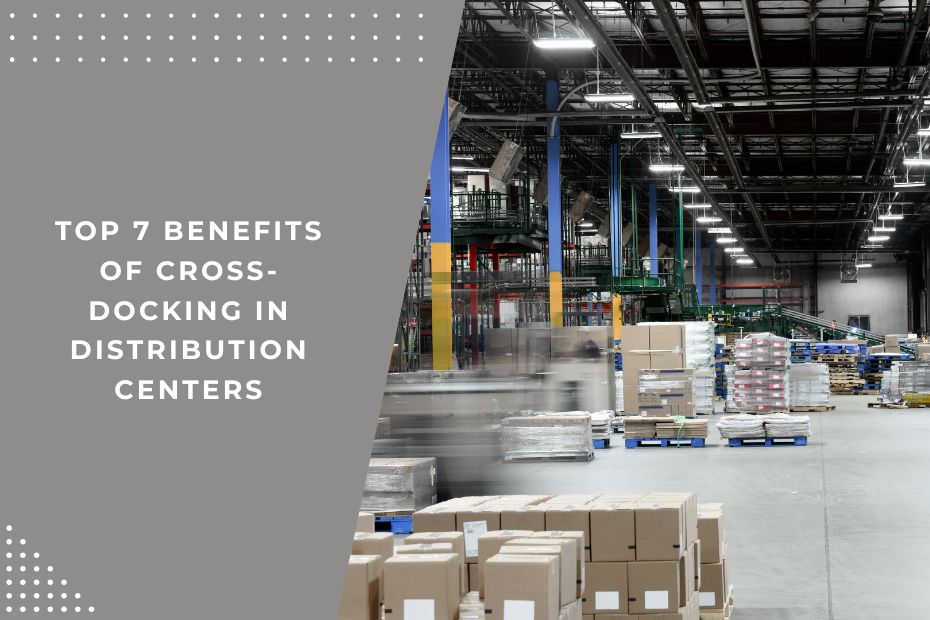Cross-docking is a game-changer for businesses looking to optimize their supply chain and improve operational efficiency. By bypassing traditional storage and moving products directly from inbound to outbound transportation, this strategy reduces costs, minimizes delays, and ensures fresher products reach the market faster. Let’s explore the top seven benefits of implementing cross-docking in distribution centers.
1. Reduced Storage Costs
One of the most significant advantages of cross-docking is its ability to minimize or eliminate storage costs. Traditional warehousing involves holding inventory for extended periods, which can tie up capital and incur expenses related to space, utilities, and security. With cross-docking, products spend minimal time—sometimes mere hours—in the distribution center.
By moving goods quickly from receiving to shipping docks, companies can operate leaner supply chains and reduce their reliance on large storage facilities. This is particularly beneficial for businesses dealing with high-volume or fast-moving goods, as it allows them to reallocate resources to other critical areas.
2. Enhanced Transportation Efficiency
Cross-docking optimizes transportation by consolidating shipments from multiple suppliers into full truckloads for outbound delivery. This process ensures that trucks are fully utilized, reducing the number of trips required and lowering transportation costs. Additionally, fewer trips mean less fuel consumption, which contributes to a smaller carbon footprint—a win for both businesses and the environment.
This efficiency is especially advantageous in industries where transportation costs constitute a significant portion of overall expenses. By improving load utilization, companies can achieve substantial cost savings and create a more sustainable logistics operation.
3. Improved Product Quality and Freshness
For businesses handling perishable goods, such as food and pharmaceuticals, maintaining product quality and freshness is critical. Cross-docking minimizes storage time, ensuring that these goods spend less time in warehouses and more time on the move to their final destination.
This rapid movement through the supply chain preserves the integrity of sensitive products and reduces the risk of spoilage or quality degradation. Retailers benefit from having fresher products on their shelves, which boosts customer satisfaction and reduces waste—a priority for businesses committed to sustainability.
4. Faster Delivery Times
In today’s fast-paced market, timely delivery is more than a competitive advantage—it’s an expectation. Cross-docking accelerates the movement of goods from suppliers to customers by eliminating the need for lengthy storage periods. Products move seamlessly through the distribution center, reaching customers faster than they would in a traditional supply chain model.
This speed is particularly valuable in industries like e-commerce, where customer expectations for quick delivery are high. Whether it’s next-day shipping or same-day delivery, cross-docking supports businesses in meeting these demands efficiently.
5. Lower Labor Costs
With fewer handling steps required, cross-docking reduces labor costs associated with inventory management. In a traditional warehouse, goods must be unloaded, stored, picked, and reloaded for delivery—a process that involves multiple touchpoints. Each step adds to labor costs and increases the risk of errors or product damage.
In a cross-docking system, products are unloaded from inbound shipments and immediately transferred to outbound transportation with minimal handling. This streamlined process reduces the need for extensive manual intervention, allowing businesses to allocate labor resources more effectively.
6. Streamlined Inventory Management
Cross-docking simplifies inventory management by reducing the amount of stock held at any given time. Instead of maintaining large inventories to buffer against demand fluctuations, businesses can rely on precise coordination between suppliers and distribution centers to ensure products are available when needed.
This lean approach improves supply chain responsiveness and reduces the complexities of managing excess inventory. It also frees up capital that would otherwise be tied up in stock, enabling businesses to invest in other growth opportunities.
7. Enhanced Supply Chain Collaboration
Implementing cross-docking requires close coordination between suppliers, manufacturers, and retailers, fostering stronger relationships across the supply chain. Real-time data sharing, communication, and collaboration are essential to ensure that products move smoothly and efficiently through the system.
This level of partnership improves operational efficiency and builds trust and transparency between stakeholders. By working together, businesses can create a more agile and resilient supply chain capable of adapting to market changes and customer demands.
Key Advantages of Cross-Docking
- Reduce storage costs by minimizing the need for warehousing.
- Enhance transportation efficiency through shipment consolidation.
- Improve product quality with faster movement through the supply chain.
- Accelerate delivery times to meet customer expectations.
- Lower labor costs by reducing handling requirements.
- Streamline inventory management for a leaner supply chain.
- Foster supply chain collaboration for better communication and responsiveness.
In Conclusion
Cross-docking offers a host of benefits that make it an attractive strategy for businesses seeking to improve supply chain efficiency. From reducing costs and enhancing product quality to speeding up deliveries and fostering collaboration, this approach has the potential to transform operations. Implementing cross-docking may require careful planning and coordination, but the rewards are well worth the effort. For businesses ready to adapt to the demands of modern markets, cross-docking provides a reliable solution to streamline logistics and deliver exceptional value to customers.

